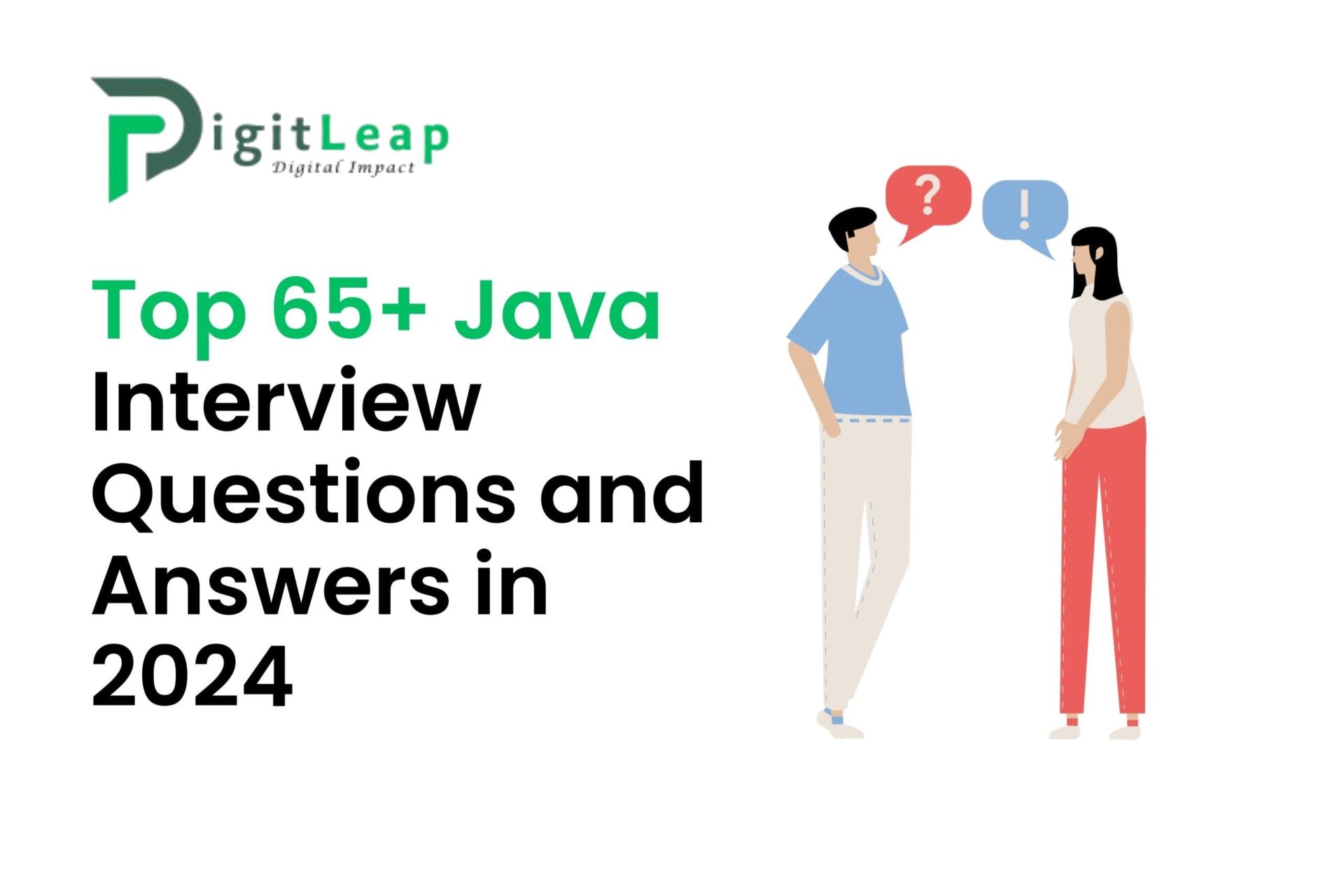Top 65+ Java Interview Questions and Answers for 2025: Guide to Java Mastery
Java remains one of the most in-demand programming languages, powering everything from enterprise applications to Android apps. As we look ahead to 2025, mastering Java is more important than ever. Whether you’re a seasoned developer or a fresh graduate, being well-prepared for a Java interview can set you apart. Below is a comprehensive, human-friendly guide featuring over 65 interview questions along with sample answers that capture both the technical know-how and the practical experience needed to succeed in 2025.

General Java Concepts
- What is Java, and why is it so popular?
Answer: Java is a high-level, object-oriented programming language known for its portability and robustness. Its “write once, run anywhere” philosophy, strong community support, and vast ecosystem of libraries and frameworks make it a top choice for developers worldwide. - Can you explain the concept of the Java Virtual Machine (JVM)?
Answer: The JVM is a virtual machine that runs Java bytecode. It abstracts the underlying hardware, enabling Java applications to run on any device with a compatible JVM. This contributes to Java’s platform independence. - What are the main features of Java?
Answer: Key features include object-oriented programming, platform independence, automatic memory management (garbage collection), strong security features, and a rich set of APIs. - What is the difference between JDK, JRE, and JVM?
Answer: The JDK (Java Development Kit) includes tools for developing Java applications, the JRE (Java Runtime Environment) contains the JVM and libraries needed to run Java programs, and the JVM is the engine that executes Java bytecode. - How does Java achieve platform independence?
Answer: By compiling source code into bytecode that can be executed on any JVM, Java ensures that programs can run on different operating systems without modification.
Object-Oriented Programming in Java
- What is Object-Oriented Programming (OOP)?
Answer: OOP is a programming paradigm based on the concept of objects, which encapsulate data and behavior. Key principles include encapsulation, inheritance, polymorphism, and abstraction. - Can you explain encapsulation in Java?
Answer: Encapsulation involves bundling data (fields) and methods that operate on the data into a single unit, typically a class, while restricting direct access to some of the object’s components. This promotes data security and modularity. - What is inheritance, and how is it used in Java?
Answer: Inheritance allows one class (subclass) to inherit fields and methods from another (superclass). This promotes code reuse and hierarchical classifications. - Describe polymorphism in Java.
Answer: Polymorphism allows objects to be treated as instances of their parent class rather than their actual class. This enables methods to perform different tasks based on the object’s actual type, enhancing flexibility. - What is abstraction, and why is it important?
Answer: Abstraction involves hiding complex implementation details and exposing only the necessary parts. It simplifies programming and enhances code maintainability.
Java Syntax and Fundamentals
- What are the basic data types in Java?
Answer: Java provides eight primitive data types: byte, short, int, long, float, double, char, and boolean. - Explain the difference between a variable and a constant.
Answer: A variable can change its value during program execution, whereas a constant, defined using thefinalkeyword, remains unchanged once assigned. - What is a loop in Java, and what types do you use?
Answer: Loops are used to execute a block of code repeatedly. Java offersfor,while, anddo-whileloops. - How do you handle exceptions in Java?
Answer: Exceptions are handled using try-catch blocks. You can also usefinallyfor code that must run regardless of whether an exception occurs, andthrowsto propagate exceptions. - What is a constructor?
Answer: A constructor is a special method used to initialize objects. It has the same name as the class and is called when an instance is created.
Collections and Data Structures
- What is the Java Collections Framework?
Answer: It is a set of interfaces and classes that provide various data structures (like List, Set, Map) and algorithms to store, retrieve, and manipulate data efficiently. - How do you choose between ArrayList and LinkedList?
Answer: ArrayList is better for fast random access and less frequent modifications, while LinkedList excels in frequent insertions and deletions due to its node-based structure. - What is a HashMap in Java?
Answer: A HashMap is a key-value pair data structure that offers fast lookup, insertion, and deletion operations based on hash codes. - Explain the difference between HashMap and TreeMap.
Answer: HashMap offers constant-time performance for basic operations, but TreeMap maintains sorted order based on keys, which can be useful for ordered data. - What is a Set in Java, and how is it different from a List?
Answer: A Set is a collection that does not allow duplicate elements, whereas a List allows duplicates and maintains the order of insertion.
Pointers to Memory Management and Concurrency
- How does Java handle memory management?
Answer: Java uses automatic garbage collection to manage memory. The JVM automatically frees up memory by removing objects that are no longer referenced. - What is a memory leak, and how can it be prevented in Java?
Answer: A memory leak occurs when objects are not properly released, leading to excessive memory use. It can be prevented by ensuring that references to unused objects are removed and using proper design patterns. - What are threads in Java?
Answer: Threads are lightweight processes that allow concurrent execution of code. They are managed by the JVM and can improve performance in multi-core systems. - How do you achieve synchronization in Java?
Answer: Synchronization in Java is achieved using thesynchronizedkeyword, which ensures that only one thread can access a method or block of code at a time, preventing race conditions. - What is the difference between a process and a thread?
Answer: A process is an independent execution unit with its own memory space, while a thread is a smaller unit within a process that shares memory with other threads.
Advanced Topics and Frameworks
- What is Java Stream API?
Answer: Introduced in Java 8, the Stream API allows for functional-style operations on collections, making it easier to filter, map, and reduce data in a declarative manner. - How do lambda expressions work in Java?
Answer: Lambda expressions provide a concise way to represent anonymous functions, enabling functional programming techniques by simplifying the syntax for writing single-method interfaces. - What is the Optional class?
Answer: The Optional class is a container that may or may not contain a non-null value, helping to prevent null pointer exceptions by forcing explicit handling of absent values. - What are the key features of Java 11/17?
Answer: Java 11 and 17 include new features like local-variable syntax for lambda parameters, improvements in garbage collection, and enhanced performance and security features. Java 17 is a long-term support (LTS) version, making it ideal for enterprise applications. - What is the significance of the Java Module System introduced in Java 9?
Answer: The module system, or Project Jigsaw, helps organize code into modules, improving encapsulation and scalability, and making large applications easier to manage and maintain.
Java Best Practices and Design Patterns
- Why is coding style important in Java?
Answer: Consistent coding style improves readability and maintainability. It helps teams collaborate more effectively and reduces the risk of errors. - What are design patterns, and can you name a few common ones in Java?
Answer: Design patterns are proven solutions to common software design problems. Common patterns in Java include Singleton, Factory, Observer, and Strategy. - How do you implement the Singleton pattern in Java?
Answer: The Singleton pattern restricts a class to a single instance. It is typically implemented by making the constructor private and providing a static method that returns the single instance. - What is the Factory pattern?
Answer: The Factory pattern provides a way to create objects without exposing the instantiation logic. It allows for more flexible and scalable code by decoupling object creation from usage. - Can you explain the Observer pattern?
Answer: The Observer pattern defines a one-to-many relationship between objects. When one object changes state, all its dependents are notified, which is useful for implementing event handling systems. - What is the importance of unit testing in Java?
Answer: Unit testing ensures that individual components work correctly. It helps catch bugs early, facilitates refactoring, and improves code quality. Frameworks like JUnit are commonly used for unit testing in Java. - How do you write maintainable code in Java?
Answer: Writing maintainable code involves following best practices, adhering to coding standards, writing clear documentation, and breaking your code into small, reusable modules.
Frameworks and Libraries
- What is Spring Framework, and why is it widely used?
Answer: The Spring Framework is a powerful, lightweight framework used for building enterprise applications. It supports dependency injection, aspect-oriented programming, and simplifies the development of robust, scalable applications. - What are some common modules of Spring?
Answer: Key modules include Spring Core, Spring MVC, Spring Boot, Spring Data, and Spring Security, each providing tools and functionalities to streamline different aspects of application development. - What is Hibernate, and how does it simplify database interactions?
Answer: Hibernate is an ORM (Object-Relational Mapping) framework that maps Java objects to database tables. It simplifies database interactions by automating CRUD operations and managing complex relationships. - How do you integrate Spring and Hibernate in an application?
Answer: Integration is typically achieved using Spring’s ORM module, which allows you to configure Hibernate as the persistence provider. This setup simplifies transaction management and session handling. - What is RESTful Web Service, and how is it implemented in Java?
Answer: RESTful Web Services use HTTP requests to perform CRUD operations. In Java, frameworks like Spring Boot and JAX-RS are commonly used to build RESTful APIs.
Advanced Java Concepts
- What are Java Generics, and why are they useful?
Answer: Generics allow you to write classes, interfaces, and methods that operate on a specific type of data. They improve code reusability and type safety by catching errors at compile time. - Explain the concept of multithreading in Java.
Answer: Multithreading enables concurrent execution of two or more parts of a program. Java provides built-in support for multithreading through the Thread class and the Runnable interface, allowing for more efficient use of resources. - What is synchronization, and why is it important?
Answer: Synchronization is a mechanism to control access to shared resources in a multithreaded environment. It prevents race conditions and ensures that data remains consistent when multiple threads access or modify it concurrently. - How do you implement a thread-safe singleton in Java?
Answer: A thread-safe singleton can be implemented using synchronized methods or by using the “double-checked locking” principle. Alternatively, using an enum-based singleton is considered both thread-safe and simple. - What is the Java Memory Model?
Answer: The Java Memory Model describes how threads in Java interact with memory, including how variables are stored, read, and written across multiple threads. It is crucial for understanding concurrency and ensuring thread safety. - How do you optimize performance in Java applications?
Answer: Performance can be optimized by profiling the application to identify bottlenecks, optimizing algorithms, managing memory efficiently, and using concurrency features wisely. - What is the significance of lambda expressions in Java?
Answer: Lambda expressions provide a concise way to represent anonymous functions, making code easier to read and write. They are particularly useful for functional-style programming and working with the Stream API. - What is the Stream API, and how does it improve data processing?
Answer: The Stream API allows for efficient, functional-style operations on collections, such as filtering, mapping, and reducing. It simplifies processing large data sets with a clear and expressive syntax. - Explain the difference between checked and unchecked exceptions.
Answer: Checked exceptions are exceptions that must be handled or declared in the method signature, while unchecked exceptions (RuntimeExceptions) do not require explicit handling, allowing for more flexible error management. - How do you implement exception handling in Java?
Answer: Exception handling is implemented using try-catch-finally blocks. This allows you to catch errors, handle them gracefully, and ensure that certain code runs regardless of whether an exception occurs. - What is reflection in Java?
Answer: Reflection is a feature that allows a program to inspect and modify its own structure at runtime. It is useful for dynamic object creation and accessing methods or fields that may not be known at compile time. - How do you use annotations in Java?
Answer: Annotations provide metadata about the code. They can be used to give instructions to the compiler, generate code at runtime, or configure frameworks like Spring and Hibernate. - What is the role of the
finalkeyword in Java?
Answer: Thefinalkeyword is used to restrict the change of variables, methods, or classes. A final variable cannot be reassigned, a final method cannot be overridden, and a final class cannot be subclassed. - What is garbage collection in Java?
Answer: Garbage collection is an automatic process in Java that reclaims memory used by objects that are no longer accessible, helping to prevent memory leaks and optimize performance. - How do you monitor and tune garbage collection?
Answer: You can monitor garbage collection using tools like VisualVM and JConsole. Tuning may involve adjusting heap sizes and using different garbage collector options to improve performance. - What is the significance of the volatile keyword?
Answer: The volatile keyword indicates that a variable’s value will be modified by different threads, ensuring that updates are propagated predictably and preventing caching issues in a multithreaded environment. - Explain method overloading and method overriding.
Answer: Method overloading allows a class to have multiple methods with the same name but different parameters, while method overriding allows a subclass to provide a specific implementation for a method defined in its superclass. - What are inner classes in Java?
Answer: Inner classes are classes defined within another class. They help group classes that belong together and can access the members of the outer class, promoting encapsulation. - What is a try-with-resources statement?
Answer: Introduced in Java 7, try-with-resources ensures that resources (like streams) are closed automatically after the program is finished with them, reducing boilerplate code and potential resource leaks. - How do you implement serialization in Java?
Answer: Serialization is the process of converting an object into a byte stream for storage or transmission. This is implemented by having a class implement theSerializableinterface, which marks it as capable of being serialized. - What is the difference between abstraction and encapsulation?
Answer: Abstraction involves hiding complex implementation details and exposing only the necessary functionality, while encapsulation bundles data and methods that operate on the data together, restricting direct access to some of the object’s components. - How do you use the Java Collections Framework?
Answer: The Collections Framework provides a set of classes and interfaces (like List, Set, Map) for storing and processing groups of objects. Understanding how to choose and use these data structures effectively is key to efficient programming. - What is multithreading, and why is it important?
Answer: Multithreading allows a program to execute multiple threads concurrently, improving performance on multi-core systems. It is essential for tasks that can be parallelized, such as processing large data sets or handling multiple user requests simultaneously. - How do you handle deadlocks in Java?
Answer: Prevent deadlocks by designing your code to avoid circular dependencies, using timeouts, and ensuring that locks are acquired and released in a consistent order. - What is the Java Memory Model?
Answer: The Java Memory Model defines how threads interact through memory, including the rules for reading and writing variables. It is fundamental for ensuring correct behavior in concurrent programming. - How do you implement design patterns in Java?
Answer: I apply design patterns such as Singleton, Factory, and Observer to solve common design problems. They provide proven templates that help create more maintainable and scalable code.
Conclusion
These 68+ Java interview questions and answers provide a comprehensive overview of the key topics you need to master for your interviews in 2025. By understanding these concepts—from basic syntax and OOP principles to advanced topics like multithreading and design patterns—you’ll be well-prepared to demonstrate your expertise and passion for Java. Remember, every interview is an opportunity to learn and grow, so stay curious and keep coding!






